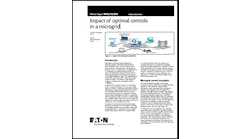In an interview with Microgrid Knowledge’s Editor-in-Chief Elisa Wood, Jason Kaplan, vice president for energy services at Lima Company, explains how macroeconomic trends like inflation and rising energy prices will drive microgrid policy changes and present a real opportunity for the microgrid industry.
From inflation to rising energy prices, the war in Ukraine and COVID-19, the macroeconomic trends we’re seeing today will help drive wider adoption of microgrid technology, according to Jason Kaplan, vice president for energy services at Lima Company. Kaplan sat down with Microgrid Knowledge’s Editor-in-Chief Elisa Wood at the Microgrid 2022 conference to explain why.
It’s just that today’s trends are providing the extra impetus to really focus on that need, according to Kaplan.
Microgrid technology has been around for a long time, but Kaplan says he’s optimistic about today’s market because “there certainly has been a focus as relates to policy recently.” Kaplan believes that the current macroeconomic trends will drive the policy changes necessary to encourage wider adoption of cogeneration, renewable gas, biogas and hydrogen gas.
He also thinks these policy changes will lead to “lowering the price of integrating a microgrid with battery storage and solar,” which will be another key factor in driving microgrid adoption.
Kaplan is bullish on the market because he believes many areas can benefit from microgrid technology. “We’re looking to implement it in some of these areas that are prone to blackouts or prone to disruptions of the grid, as we’ve seen with the hurricanes and natural disasters,” he says.
Learn more about how the microgrid market and microgrid policy is changing by viewing Microgrid 2022: Microgrids as Climate Heroes. Videos of each session will be available for free as part of the Microgrid Knowledge video library.








